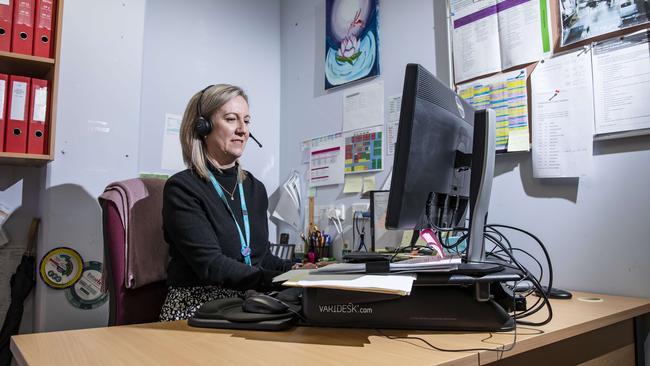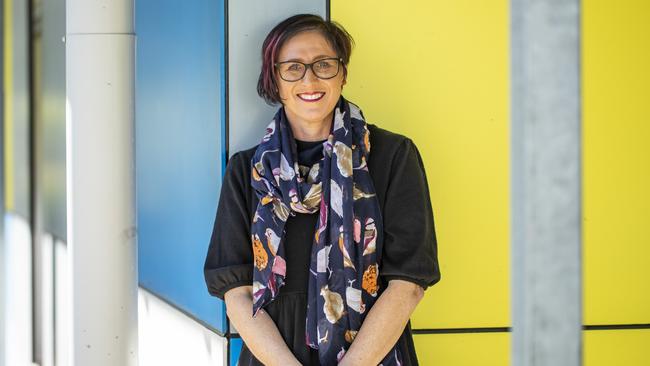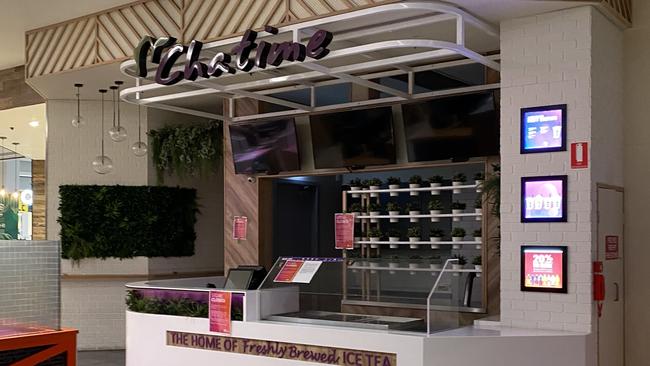Inside story of the trace: How mass Logan outbreak was stopped
When two women infected with coronavirus snuck into Queensland from a Melbourne hotspot, contact tracers sprung into action to avert a mass outbreak. For the first time they reveal how the race to trace unfolded and how their detective work tracked 1,200 ‘close contacts’. READ THE INSIDE STORY
Queensland contact tracers have revealed the mammoth challenge they faced in the wake of the recent COVID-19 cases in Brisbane’s south side.
Health officials identified “more than 1200 close contacts” in relation to the two women who contracted COVID-19 after they allegedly illegally travelled from Melbourne to Queensland.
The women - Olivia Muranga, 19, and Diana Lasu, visited numerous locations while infectious, including restaurants, supermarkets shopping centres and schools, where they worked, causing fears it could spark an outbreak.
Director of Metro South Public health Dr Kari Jarvinen said it was a race to trace the people they came into contact with and save the city from disaster.
“In the recent cluster we had in our area, we had more than 1200 close contacts, which is from a few cases” he says.

“Those same people needed to go into quarantine.
“We were concerned, it was a huge workload with a lot of people who were potentially exposed.”
Dr Jarvinen said the large number of contacts required 60 tracers to investigate which is double the usual amount.
“We threw everything at it,” he says.
“We were rather lucky.
“This could’ve turned out quite differently.”
We barely knew their job existed six months ago but now we’re relying on them to help save our lives. So, how did contact tracers save the state from potential disaster?
Dr Jarvinen alongside Queensland contact tracers Rachel Perry and Deborah Judd, who have been tracers for years, break down what happens when they’re faced with an outbreak.
What are the first steps you take in an outbreak?
An outbreak is usually defined as two or more positive cases, says Dr Jarvinen, and when they’re identified they launch into action.
The tracers are notified of positive cases by the laboratory and it’s then their job to deliver the diagnosis to the individuals.
Judd has been a contact tracer for six years, previously tracing other diseases like measles, meningococcal and typhoid, and says this can be one of the hardest calls they make.
“People can be shocked, upset and we deal with different emotions when we first make that call but we really quickly need to allay their fears and concerns,” she says.

Then, the questions begin. The most important of those, Perry says, is finding out when the symptoms first started to appear.
“This helps us to find the infectious period, which is 48 hours before the onset of symptoms, and from there we figure out how far back we need to go to start contact tracing,” says Perry, who is the nurse unit manager of Metro South Public Health Unit.
“Then we start going into their day-to-day movements … we ask them everything they’ve done from the minute they wake up; who they were with, how long they were there, who did they speak to and who did they interact with,” she says.
“We ask them to look at bank statements to help them track their movements or look on Google Maps to see where they have been to prompt their memory.
“We can be on the phone for upward of two hours.”

How do you know who to contact?
Firstly, Dr Jarvinen says, they need to identify people who have come into close contact with an infectious person.
“The basic rules are fairly simple,” he explains.
“A close contact is someone who has had face-to-face contact or very close contact with someone for 15 minutes or more or have been in the same room with them for more than two hours,” he says.
“In the case of a coffee shop, if you’ve been there for five minutes and kept a good social distance with the shop attendant, that isn’t going to be a close contact.
“But if they are sitting in a restaurant with the same people for two hours, then that becomes a question mark; how long where they there? When did they come? When did they leave?” One missed question or overlooked person could mean the difference between a city under control or facing peril.
How do you gather information?
When a case is transmitted through the community, it becomes complex, says Perry.
“It’s divide and conquer,” she said.
“We will allocate the work, someone might take a workplace, someone might take a shopping centre, someone will look after the case and their family and we go to the phones and start making a lot of phone calls.”
During their worst day earlier in the year, Dr Jarvinen says 100 people worked across three different sites to trace more than 25 positive cases.

The tracers are relying on people to provide correct and accurate information and if required, Dr Jarvinen says they enlist the help of police.
“If we are unsure or get stuck or don’t think we have the full information (from the case), then we are able to get help from police,” he says.
“Police can have a look at where these people moved in a shopping centre (for example) by looking at CCTV and camera footage.”
Tracers can access data gathered from the COVID Safe app but Dr Jarvinen says no positive case in Brisbane’s south has had it.
“Of all the cases we have had, they haven’t had the app,” he says.
“We definitely would (use it) and encourage people to have it.”
What they do is essentially detective work.
“We ring every single person and go through a detailed assessment,” says Perry.
“We do a call directly to managers (of restaurants/shops) and principals (of schools) and start back at the beginning.
Tracers are heavily relying on information the public provides when asked to sign in at restaurants or larger venues.
Perry says, this is key to helping them do their job faster.
“It is so important people put the right information on those logs and they give us the right times, phone numbers and names because it makes our job so much quicker and easier and we can reach people.”
When there’s a case linked to a school, Dr Jarvinen says they immediately contact the principal who alert parents and staff.
“We need to get clear information from the case; what they were doing, when they were at the school, whether it was a student or staff member; what their hours were etc,” he says.
“We then ask their manager, teacher or principal of the school of their movements as well to cross check from both sides.
“We need to know if it is a certain block or the whole school”
Dr Jarvinen says usually school staff provide a list of contacts and if there is a large risk they turn to advice from Chief Health Officer Jeanette Young before soliciting a full shut down.
When they can’t trace locations, like fast food outlets or shopping centres, Dr Jarvinen says turn to the media to put a call-out to the public.
How many calls can you make?
A complicated community transmitted case can involve hundreds of calls, says Perry.
“When we had between five and 10 cases a day, we were making between 200 and 300 calls a day,” says Perry, the nurse unit manager of Metro South Public Health Unit.
“That includes calls coming into the unit that we need to respond to as well as calls we are actively making to close contacts.
Judd says it can be difficult piecing together the puzzle.
“We found one case might have one or two close contacts and others may have nearly 100 close contacts and all of those close contacts then need a phone call,” says Judd.

What is the emotional toll?
They are not just contact tracers, says Perry, and the job is extremely layered.
“We’ve had to become psychologists and social workers,” she says.
“In the early days when we called people… they were lonely in quarantine.
“They want to talk to you, sometimes you can be talking about curtain rods or how their dog is unwell and the next minute you’re helping them call the vet.
“That can be a challenge… sometimes you’re busy and we have so much to get through but these people need help and we need to be there for them.”
She admits the days can be long and stressful.
“We live and breathe this every day, even on our days off we are still thinking about stuff,” Perry says.
But all it takes is a small gesture to make it worth it.
“We received a heap of ‘thank you’ cards from students at a school in Brisbane,” Perry says.
“We were tired and thinking how hard it had been when we got this pack, when we opened them, they said ‘thank you for keeping us safe’.”
As a city, we echo the sentiment.

